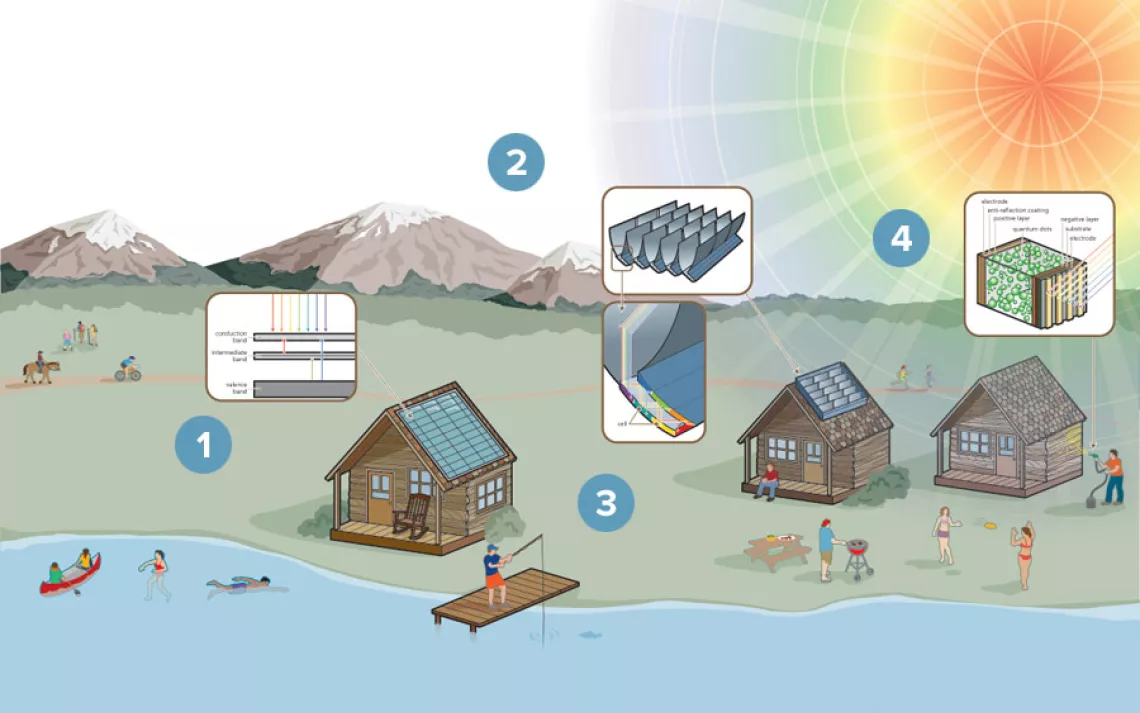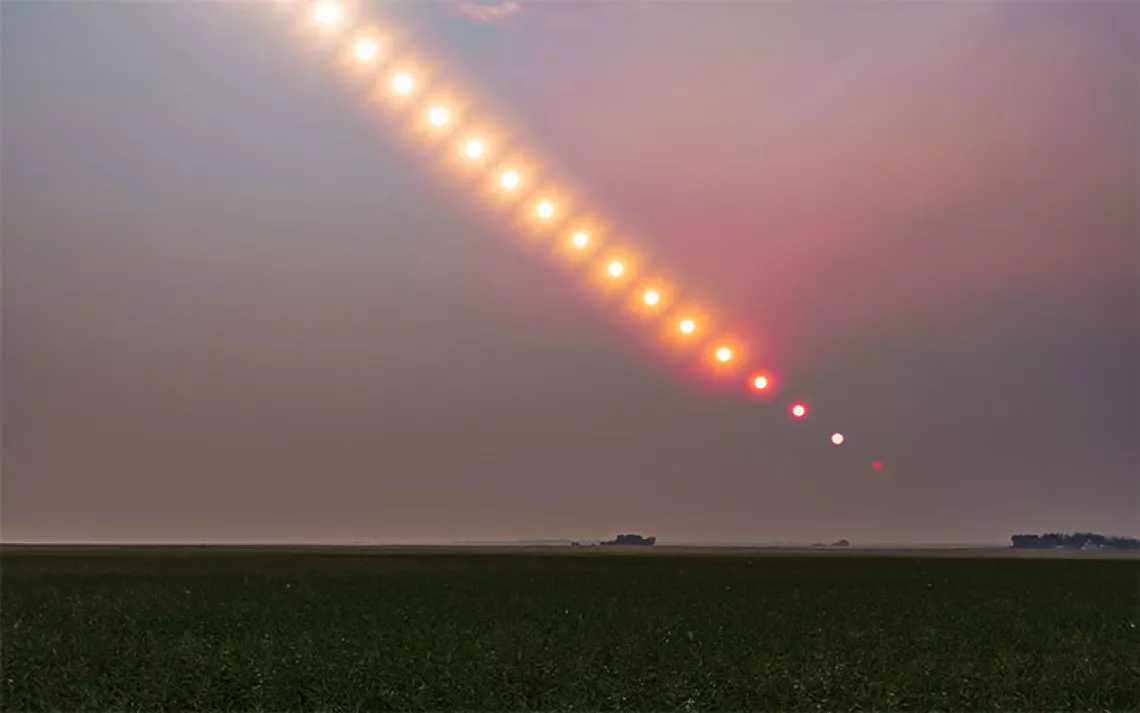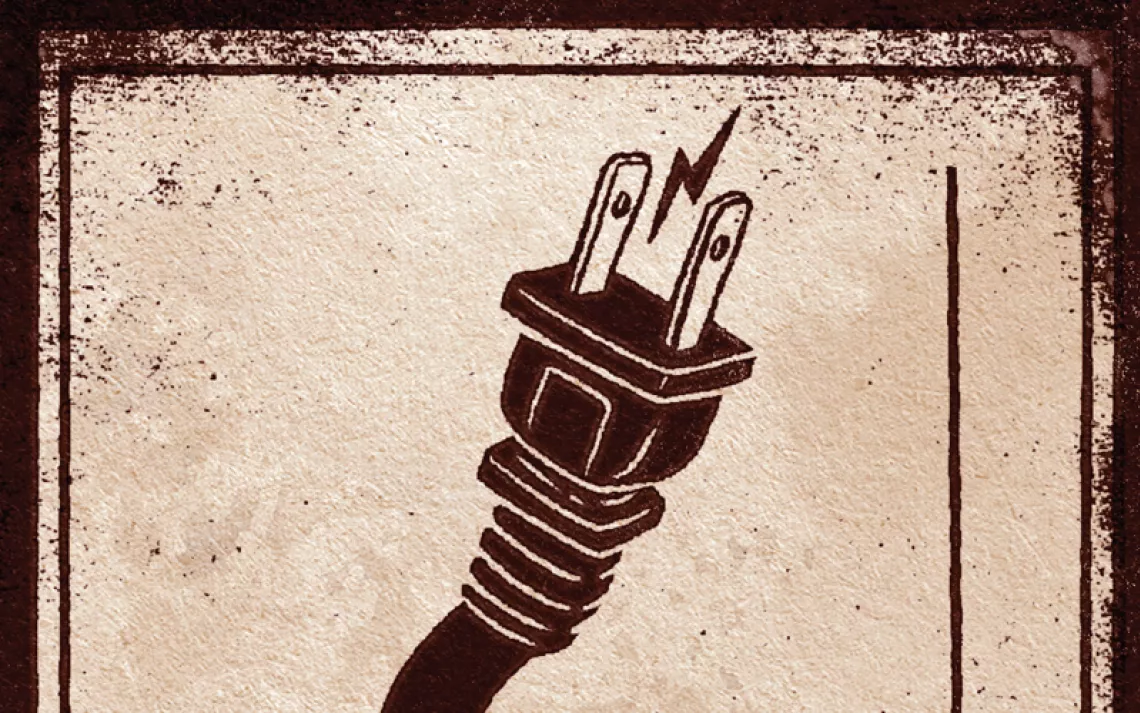Super Solar
IN WHAT MIGHT BE CALLED A NEW SPACE RACE, solar engineers are scrambling to make their products smaller and more efficient. The more efficient a solar panel, the less surface area needed to produce energy. That saves acres and adds flexibility: Dramatic increases in panel efficiency could mean that one person's sun-drenched rooftop solar panels could power a neighbor's shaded house. Today, most rooftop panels convert only about 15 to 20 percent of the solar spectrum into electricity, while the very fanciest--the kind that power spacecraft--achieve efficiencies of about 30 percent. Here's how tomorrow's solar panels might bag more rays, from low-energy infrared to high-energy ultraviolet.

Illustration by Brown Bird Design
- Today's most powerful solar cells are actually stacks of three cells, each made of a semiconductor tuned to a different wavelength of the solar spectrum. But these triple-junction cells are constructed at great effort and expense. Three years ago, researchers at the government's Lawrence Berkeley National Laboratory tweaked a gallium arsenide nitride semiconductor so that a single cell responds to nearly any photon. The trick is to adjust the alloy's content to add intermediate "energy bands," in order to capture wavelengths that would otherwise be lost. If the prototype, called a multiband cell, reaches full-scale development, it could be manufactured using the same inexpensive techniques used to make today's solar panels.
- Another approach is to split light into its component parts. A model from the California Institute of Technology, the polyhedral specular reflector, does this with a bundle of mirrored troughs that pivot to track the sun during the day.
- Sunlight falls into a subchamber, where it bounces through a series of 6 to 15 solar cells. Each cell is fronted by a filter that lets just one color of light pass through. These spectrum-splitting cells could conceivably crack the 50 percent efficiency barrier.
- At the extremely small scale, semiconductors have a quirk: Different-size crystals absorb different wavelengths of light. That's why researchers are excited about replacing traditional silicon-based photovoltaic materials with quantum dot solar cells, semiconductor nanocrystals that are essentially a liquid mixture of variously sized crystals in a stew so thin and flexible that it could, hypothetically, be sprayed on a sunny wall to power your Margaritaville blender. Make that material too thin, though, and it absorbs too little light. In 2013, engineers at the Massachusetts Institute of Technology boosted the efficiency of quantum dot solar cells by 35 percent by pouring the dots into a thicket of highly conductive nanowires.
Solar Disruptor
In Harry Atwater's career working with solar cells, which started at the Massachusetts Institute of Technology in the 1980s, he has seen fancy electronic devices, like mobile phones and lasers, transform from clunky, expensive oddities into reliable, low-cost essentials of modern life.
By comparison, the photovoltaic (PV) solar cell has progressed at a crawl. It's essentially the same device it was three decades ago--containing the same 30 parts, arranged and wired the same basic way.And its efficiency (the amount of sunlight a cell can turn into electricity) has trudged upward from 6 to 15 or 20 percent.
Atwater, now a professor of applied physics and materials science at the California Institute of Technology, thinks that a radical redesign is needed. In 2012, his Caltech team won a $2.4 million government grant to develop a PV solar system that achieves an efficiency of 50 percent or higher and is ready for mass production.
"The key here is to raise the expectation," says Atwater, 53, who sees more-efficient solar cells as crucial to dethroning fossil fuels as our primary energy source. "There's a sense, developed by people's experience, that you're limited in the amount of sophistication you can bring to the design."
Atwater is an expert in the emerging field of light management, which uses exotic technologies like photonic crystals (optical nanostructures that are tuned to specific wavelengths of light) and plasmonic design (which better controls and enhances scattering light) to convert more of the photons that enter a solar cell into electricity. He is a cofounder of Alta Devices, a company that recently announced that it's building some of the most efficient solar cells anywhere, at 30.8 percent.
Atwater is mulling three designs: One that uses a hologram to split the light spectrum into its component parts, another that bounces photons from mirror to mirror like a periscope, and a third that concentrates photons onto miniature cones that allow nearly none to escape.
Each is far more complex than the cells that make up today's solar panels. But Atwater recalls the flat-panel LCD displays of his college days, which cost thousands of dollars and hardly worked. Now, thanks to mass production, a flawless 50-inch LCD TV can be had for $650. Atwater hopes his updated solar designs will become just as ubiquitous.
 The Magazine of The Sierra Club
The Magazine of The Sierra Club







